| Listing 1 - 10 of 99 | << page >> |
Sort by
|
Book
ISBN: 9043004200 Year: 2001 Publisher: Amsterdam : Addison Wesley,
Abstract | Keywords | Export | Availability | Bookmark
 Loading...
Loading...Choose an application
- Reference Manager
- EndNote
- RefWorks (Direct export to RefWorks)
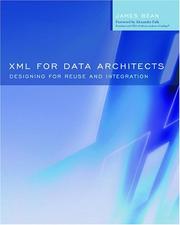
ISBN: 1281078212 9786611078218 0080521436 1558609075 9780080521435 9781558609075 9781281078216 6611078215 Year: 2003 Publisher: Amsterdam Boston Morgan Kaufmann Publishers
Abstract | Keywords | Export | Availability | Bookmark
 Loading...
Loading...Choose an application
- Reference Manager
- EndNote
- RefWorks (Direct export to RefWorks)
""The book addresses a sorely missing set of considerations in the real world... This is a very timely book.""-Peter Herzum, author of Business Component Factory and CEO of Herzum SoftwareXML is a tremendous enabler for platform agnostic data and metadata exchanges. However, there are no clear processes and techniques specifically focused on the engineering of XML structures to support reuse and integration simplicity, which are of particular importance in the age of application integration and Web services. This book describes the challenges of using XML in a manner
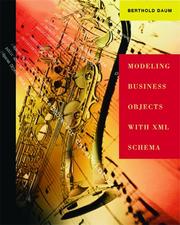
ISBN: 1281035335 9786611035334 0080511813 1558608168 9780080511818 9781558608160 3898642186 9783898642187 Year: 2003 Publisher: San Francisco, Calif. : Heidelberg, Germany : Morgan Kaufmann ; dpunkt.verlag,
Abstract | Keywords | Export | Availability | Bookmark
 Loading...
Loading...Choose an application
- Reference Manager
- EndNote
- RefWorks (Direct export to RefWorks)
XML Schema is the new language standard from the W3C and the new foundation for defining data in Web-based systems. There is a wealth of information available about Schemas but very little understanding of how to use this highly formal specification for creating documents. Grasping the power of Schemas means going back to the basics of documents themselves, and the semantic rules, or grammars, that define them. Written for schema designers, system architects, programmers, and document authors, Modeling Business Objects with XML Schema guides you through understanding Schemas from the ba
Book
ISBN: 1504424212 Year: 2016 Publisher: New York : IEEE,
Abstract | Keywords | Export | Availability | Bookmark
 Loading...
Loading...Choose an application
- Reference Manager
- EndNote
- RefWorks (Direct export to RefWorks)
A grammar for a tag-based language whose aim is to provide designers of information systems with a unified and extensible methodology for capturing systems behaviors by means of event logs and event streams is defined in the XES standard. An XML Schema describing the structure of an XES event log/stream and a XML Schema describing the structure of an extension of such a log/stream are included in this standard. Moreover, a basic collection of so-called XES extension prototypes that provide semantics to certain attributes as recorded in the event log/stream is included in this standard. Scope: This standard defines World Wide Web Consortium (W3C) Extensible Markup Language (XML) structure and constraints on the contents of XML 1.1 documents that can be used to represent extensible event stream (XES) instances.1 A XES instance corresponds to a file-based event log or a formatted event stream that can be used to transfer event-driven data in a unified and extensible manner from a first site to a second site. Typically, the first site will be the site generating this event-driven data (for example, workflow systems, case handling systems, procurement systems, devices like wafer steppers and X-ray machines, and hospitals) while the second site will be the site analyzing this data (for example, by data scientists and/or advanced software systems). To transfer event-driven data in a unified manner, this standard includes a W3C XML Schema describing the structure of a XES instance. To transfer this data in an extensible manner, this standard also includes a W3C XML Schema describing the structure of an extension to such a XES instance. Basically, such an extension provides semantics to the structure as prescribed by the XES instance. Finally, this standard includes a basic collection of such extensions. Purpose: The purpose of this standard is to provide a generally acknowledged XML format for the interchange of event data between information systems in many applications domains on the one hand and analysis tools for such data on the other hand. As such, this standard aims to fix the syntax and the semantics of the event data which, for example, is being transferred from the site generating this data to the site analyzing this data. As a result of this standard, if the event data is transferred using the syntax as described by this standard, its semantics will be well understood and clear at both sites.
Book
ISBN: 3031141326 3031141318 Year: 2022 Publisher: Cham, Switzerland : Springer,
Abstract | Keywords | Export | Availability | Bookmark
 Loading...
Loading...Choose an application
- Reference Manager
- EndNote
- RefWorks (Direct export to RefWorks)
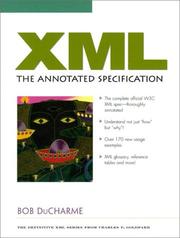
ISBN: 0130826766 9780130826763 Year: 1999 Publisher: Upper Saddle River, NJ Prentice Hall PTR
Abstract | Keywords | Export | Availability | Bookmark
 Loading...
Loading...Choose an application
- Reference Manager
- EndNote
- RefWorks (Direct export to RefWorks)
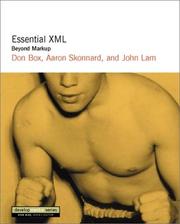
ISBN: 0201709147 9780201709148 Year: 2000 Publisher: Boston, Mass. Addison-Wesley
Abstract | Keywords | Export | Availability | Bookmark
 Loading...
Loading...Choose an application
- Reference Manager
- EndNote
- RefWorks (Direct export to RefWorks)
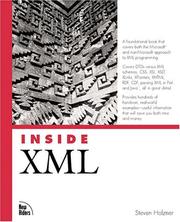
ISBN: 0735710201 9780735710207 Year: 2001 Publisher: Indianapolis, Ind.: New Riders,
Abstract | Keywords | Export | Availability | Bookmark
 Loading...
Loading...Choose an application
- Reference Manager
- EndNote
- RefWorks (Direct export to RefWorks)
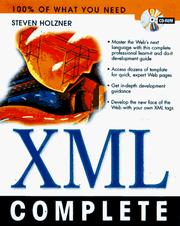
ISBN: 0079137024 Year: 1998 Publisher: New York McGraw-Hill
Abstract | Keywords | Export | Availability | Bookmark
 Loading...
Loading...Choose an application
- Reference Manager
- EndNote
- RefWorks (Direct export to RefWorks)
Book
ISBN: 0738148784 0738148792 Year: 2006 Publisher: New York : IEEE,
Abstract | Keywords | Export | Availability | Bookmark
 Loading...
Loading...Choose an application
- Reference Manager
- EndNote
- RefWorks (Direct export to RefWorks)
This Standard specifies a World Wide Web Consortium (W3C) Extensible Markup Language (XML) binding of the data model defined in IEEE Std 1484.11.1TM-2004. The purpose of this Standard is to allow for the creation of IEEE Std 1484.11.1-2004 data-model instances in XML. This Standard uses the W3C XML Schema definition language as the encoding, which allows for interoperability and the exchange of data-model instances between various systems.
| Listing 1 - 10 of 99 | << page >> |
Sort by
|

 Search
Search Feedback
Feedback About
About Help
Help News
News